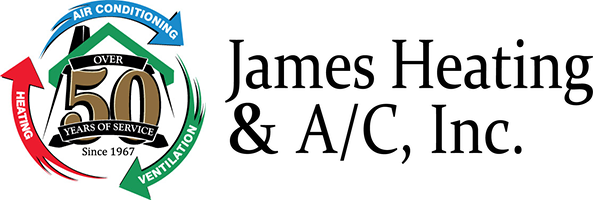
You shouldn’t be forced to give up comfort or spend a lot to keep your home at a refreshing temperature during the summer.
But what is the right temperature, exactly? We discuss ideas from energy specialists so you can determine the best setting for your family.
Here’s what we advise for the most energy-efficient setting for air conditioning in Lexington.
Recommended Thermostat Settings for Summer
Most people find placing the thermostat at 72-73 degrees is ideal. However, if there’s a big difference between your indoor and exterior temperatures, your electrical expenses will be bigger.
These are our suggestions based on the U.S. Department of Energy (DOE) and ENERGY STAR®.
While at home: 78 degrees. While that sounds warm, there are ways you can keep your residence pleasant without having the AC on frequently.
Keeping windows and curtains shut during the day keeps cool air where it needs to be—indoors. Some window coverings, like honeycomb shades or plantation shutters, are made to give more insulation and enhanced energy efficiency.
If you have ceiling fans in your residence, the DOE says you can increase thermostat temps about 4 degrees warmer without compromising comfort. That’s since they refresh by a windchill effect. Since they cool people, not rooms, turn them off when you leave a room.
If 78 degrees still appears too hot at first glance, try conducting a test for a week or so. Start by increasing your setting to 78 degrees while you’re at your residence. Then, gradually decrease it while following the tips above. You could be astonished at how cool you feel at a higher temperature setting.
While away: 88 degrees. There’s no need to keep the AC on all day while your residence is empty. Turning the temperature 7–10 degrees warmer can save you anywhere from 5–15% on your cooling costs, according to the DOE.
When you arrive home, don’t be tempted to put your thermostat below 78 to cool your residence more quickly. This isn’t productive and often leads to a more expensive cooling cost.
A programmable thermostat is a helpful approach to keep your settings in check, but it requires setting programs. If you don’t utilize programs, you might forget to move the set temperature when you go.
If you need a handy solution, consider installing a smart thermostat. This thermostat works with with your phone, so it knows when you’re at home and when you’re gone. Then it automatically modifies temperature settings for maximum savings. How much exactly? Usually $180 annually on heating and cooling, according to ENERGY STAR.
Another plus of using a smart thermostat? You can use your phone to watch and change temperature settings from just about anywhere.
While sleeping: Around 70 degrees. While ENERGY STAR suggests 82 degrees, that may be too uncomfortable for many families. The majority of people sleep better when their sleeping space is chilly, so that’s why the National Sleep Foundation recommends 60–67 degrees. But that may be too cool, based on your pajama and blanket preference.
We suggest using a similar test over a week, moving your temperature higher and slowly decreasing it to locate the right temp for your house. On mild nights, you may learn keeping windows open at night and relying on a ceiling fan is a better option than operating the air conditioning.
More Ways to Use Less Energy This Summer
There are added approaches you can spend less money on air conditioning bills throughout the summer.
- Get an energy-efficient cooling system. Central air conditioners only last about 12–15 years and get less efficient as they become older. A new air conditioner can keep your home comfier while keeping cooling bills low.
- Schedule yearly air conditioner maintenance. Routine air conditioner maintenance keeps your equipment working smoothly and might help it operate at greater efficiency. It may also help lengthen its life expectancy, since it helps technicians to spot seemingly insignificant issues before they create a major meltdown.
- Put in new air filters frequently. Follow manufacturer instructions for switching your air filter. A dusty filter can cause your system to short cycle, or run too much, and increase your electricity.
- Measure attic insulation levels. Almost 90% of houses in the U.S. don’t have proper insulation, according to the Insulation Institute. The majority of southern climates should have 13–14” of attic insulation, while northern climates need 16–18”.
- Have your ductwork checked. Ductwork that has come apart over time can leak cold air into your attic, walls or crawl space. This can result in huge comfort troubles in your residence, including hot and cold spots.
- Seal openings, doors and windows. Keep muggy air where it belongs by closing openings. You can also caulk or weather strip doors to seal more cool air indoors.
Save More Energy This Summer with James Heating & A/C, Inc
If you need to use less energy this summer, our James Heating & A/C, Inc pros can help. Get in touch with us at 336-853-6070 or contact us online for more details about our energy-saving cooling products.

